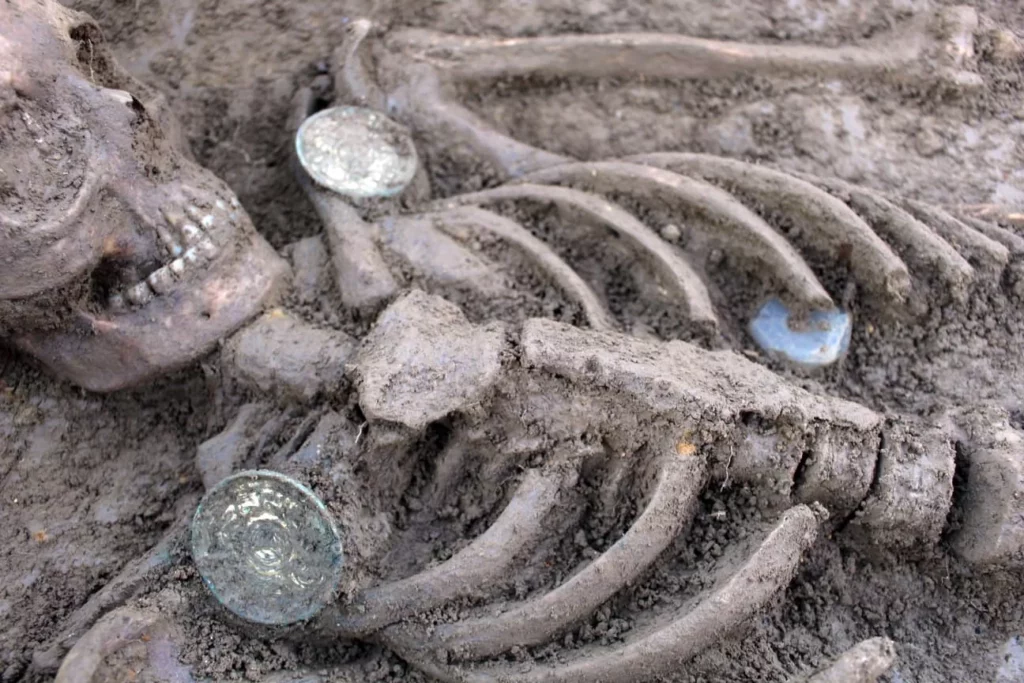Archaeologists in Gloucestershire, South West England, have made a remarkable discovery during an excavation. The Cotswold Archaeological team uncovered over 70 Anglo-Saxon tombs, revealing fascinating insights into the past. Among these tombs, seven pairs of Anglo-Saxon plate brooches were found, captivating the attention of experts and enthusiasts alike.

The announcement of this exciting find was made by Cotswold Archaeology via Twitter. These plate brooches, ornamental pieces worn in pairs on the chest to fasten clothing, were discovered in seven separate tombs. Made of gilded copper alloy, they feature embossed geometric patterns and are commonly known as disc brooches due to their round shape with a raised border.
The most prevalent design on these brooches is the running spiral, characterized by interconnected spirals encircling the brooch with a central bead. Typically, these cast brooches exhibit five or six spirals, although occasionally more can be found. It is worth noting that while the brooches are similar, they are not identical, as they were often worn in pairs but not an exact match.
Disc brooches have long been associated with high-status burials, dating back to the early Anglo-Saxon period in England. Often discovered alongside other valuable jewelry, these brooches continue to serve as markers of prestige.

Ranging in size from 20 to 70 mm in diameter, the disc brooches were placed on each shoulder or side by side on the left shoulder, accompanied by a clothing pin. This arrangement provides a vivid impression of how they would have appeared to the individuals who once adorned them.
The excavation in Gloucestershire has offered a captivating glimpse into Anglo-Saxon history, shedding light on the material culture and adornments of this ancient society. The discovery of these Anglo-Saxon plate brooches adds to our understanding of their aesthetic preferences and social practices during the 5th or 6th century.